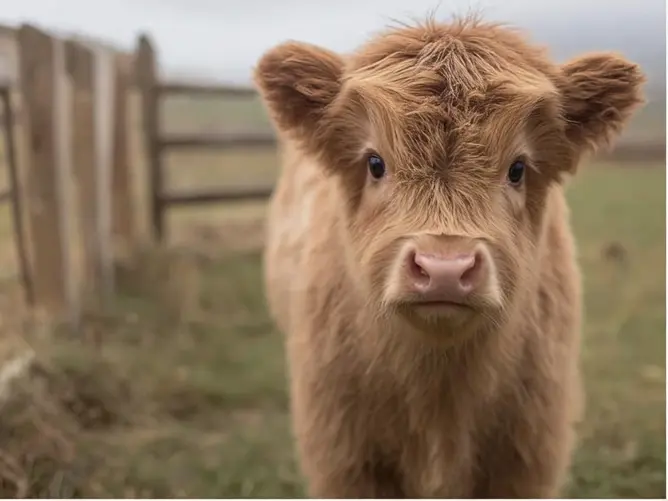Kyle Turner: The Rabbitohs legend who never forgot his roots

Why Aussies love baby Highland cows on hobby farms
A baby Highland cow is a fluffy Highland calf with a shaggy fringe and tiny horns. Highland cows have tough Scottish genes, so their calves stay cosy even when Aussie weather turns cold, thanks to their dense, shaggy coats that act like natural blankets. They are so calm and curious zoo animals. People love them because they’re friendly and photogenic, and they look very good in pictures. Its fluffy coat is like having a built-in raincoat. Two thick layers keep them warm and dry in the wind and drizzle.
In this article, we explore how baby Highland cows—rooted in Scottish heritage, famed for their fluffy coats and calm demeanour—have become a hardy, photogenic and low-impact favourite on Aussie hobby farms and agri-tourism ventures.
What makes a baby Highland cow so special?
There are few sights in a barnyard that are as instantly charming as a baby highland cow (or “highland calf” to use the technical term). With its teddy-bear fringe, big ears, and cinnamon-coloured shag, the calf looks like an oversized stuffed animal. But underneath that cute mop is a little beast bred to withstand Scotland’s rugged Highlands — and which will now thrive in Australian paddocks.
Highland calves:
- Have a double-layered coat that sheds rain and provides insulation in extreme cold, while also allowing heat to escape.
- Come with long sweeping fringes (called a dossan) to protect their eyes from insects and glare from the sun.
- Stay close to mum for their first six to eight months, to develop calm and friendly personalities with people.
In short, they have an irresistible mix of rugged heritage and cuteness that make them a drawcard on Australian farms, hobby blocks and Instagram feeds.
Rustic lineage: A brief history of Highland cattle
Highland cattle originated in the rugged Scottish Highlands and western Isles. Crofters developed these animals in the 1700s from ancient Celtic stock for meat, milk, and tough hides. They were developed by crofters in the 1700s from ancient Celtic stock for their meat, milk, and hardy hides. By the early 18th century, shaggy long-horned “kyloes” were being driven to markets in the Lowlands, gaining a reputation for toughness and rich-flavoured beef.
Throughout the 20th century, Highland cattle spread to North America, Europe, and Australia, but remain popular on commercial and hobby farms around the world today for their hardiness and attractive coats.
How baby Highland cows arrived in Australia
Highland cattle first arrived in Australia with Scottish settlers in the late 1800s, mainly brought to cooler and wetter regions like Victoria and Tasmania. Initially transported by ship, modern breeding now includes the use of air-freighted live animals, embryos, and frozen semen—making herd development far easier for local breeders.
Stud networks quickly burgeoned, and hobby farmers became enamoured with the calves’ placid demeanour and their shaggy, photogenic coats. Today, baby Highlanders are sent in purpose-built stock trucks and short flights from specialist studs to paddocks all over the country, cementing the animals as one of Australia’s most endearing heritage breeds.
Physical traits every Aussie fan should know
The first time you see Highland calves in an Aussie paddock, you’ll be struck by their fluffy, teddy-bear appearance. But there’s more than just cuteness at play.
- Shaggy double coat – an outer layer repels rain while the soft underwool keeps calves cosy through frosty winters.
- Little horn stubs pop up at birth, then spread wide as the calf grows, acting like natural heat vents and letting everyone know its rank in the paddock.
- Wide, dark eyes set beneath a thick fringe (the “dossan”) that shields against sun, wind and flies.
- Rich coat colours – from classic ginger to black, brindle and even silver, adding serious photogenic appeal for farm-gate visitors.
Affordable farming in Australia: The Highland influence
Highlands do well on marginal country, producing first-rate beef off vigorous speargrass and bracken, while also building soil health with low-impact grazing. Their light hoofprint makes them compatible with regenerative-based systems, as well as a nice answer for:
- Hobby blocks are looking for multi-species grazing presence with sheep or alpacas.
- Boutique grass-fed beef brands are looking to sell at farmers’ markets at premium prices.
- Agri-tourism businesses, where visitors will pay a premium to pet a fluffy calf and drink lattes from paddocks to plates.
Final thoughts
A baby Highland cow is more than an Instagram darling; it’s a living nod to hardy Scottish heritage now flourishing Down Under. Its gentle nature and low-impact grazing make it perfect for small Aussie farms’ regenerative practices. Caring for these fluffy calves connects people to slower, more mindful land stewardship while delighting visitors of all ages. By respecting their needs and origins, every baby Highland cow can grow into a calm, productive member of Australia’s rural landscape.

